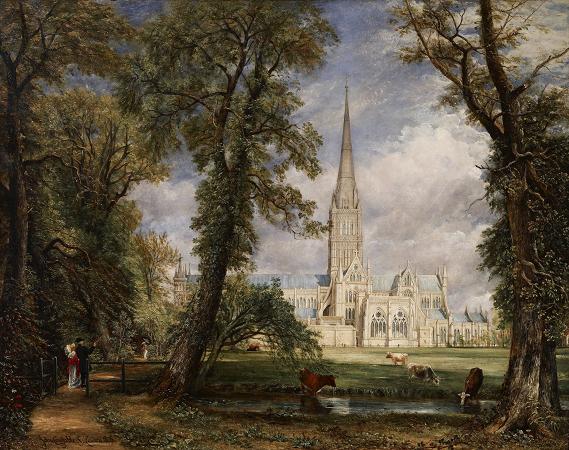Venus of Urbino (c1538). Oil on canvas. 119 x 165. The Venus of Urbino is an oil painting by the Italian painter Titian, which seems to have been begun in 1532 or 1534, and was perhaps completed in 1534, but not sold until 1538. It depicts a nude young woman, traditionally identified with the goddess Venus, reclining on a couch or bed in the sumptuous surroundings of a Renaissance palace. It is now in the Galleria degli Uffizi in Florence. The figure's pose is based on the Dresden Venus, traditionally attributed to Giorgione but which Titian at least completed. In this depiction, Titian has domesticated Venus by moving her to an indoor setting, engaging her with the viewer, and making her sensuality explicit. Devoid as it is of any classical or allegorical trappings-Venus displays none of the attributes of the goddess she is supposed to represent-the painting is sensual and unapologetically erotic. Interpretations of the painting fall into two groups. Both agree that the painting has a powerful erotic charge, but beyond that it is seen either as a portrait of a courtesan, perhaps Zaffetta, or as a painting celebrating the marriage of its first owner. This disagreement forms part of a wider debate on the meaning of the mainly Venetian tradition of the reclining female nude, which Titian had created, or helped to create, some 25 years before with the Dresden Venus of around 1510-11. For Charles Hope, It has yet to be shown that the most famous example of this genre, Titian's Venus of Urbino, is anything other than a representation of a beautiful nude woman on a bed, devoid of classical or even allegorical content. Even the indefatigable finder of allegories drawing on Renaissance Neoplatonism, Edgar Wind, had to admit that in this case an undisguised hedonism had at last dispelled the Platonic metaphors. The Venus stares straight at the viewer, unconcerned with her nudity. In her right hand she holds a posy of roses whilst she holds her other hand over her genitals. In the near background is a dog, often a symbol of fidelity. In a different space in the background two maids are shown rummaging through a cassone chest, where clothes were kept. The detailed depiction of the interior setting is unusual, perhaps unique, in Titian. Titian contracted for the 21 year old Ippolito de' Medici, reluctantly made a cardinal, by his uncle, Pope Clement VII. He was trying to pursue a military career, and was a papal diplomat. On 20 October 1532 he spent the night in Venice with Angela del Moro, or Angela Zaffetta, a leading courtesan in Venice and sometimes a dining companion of Titian and Aretino, the latter a friend of the cardinal. Titian painted Ippolito's portrait, and it seems likely that he was asked to add a nude portrait of Angela Zaffetta, or that Titian decided to paint one in the hope he would like it. On 20 December 1534 Titian wrote to Ippolito's chamberlain in Rome saying that he had been working on a painting of a woman for the cardinal. Ippolito died in August 1535, and apparently never saw the painting, which was still in Titian's studio when Guidobaldo II della Rovere, the 24-year-old son of the Duke of Urbino came in January 1538 to sit for a portrait. As letters from him and his mother show, he was extremely keen to buy it, and did so some months later; he refers to it simply as the nude woman, and was worried Titian would sell it to someone else. Later that year he inherited the Duchy of Urbino on the death of his father, hence the painting acquired the name by which it is usually known, although it seems it was mostly kept in Pesaro from early on. Alternatively, the painting may have been commissioned by Guidobaldo, possibly to celebrate his marriage in 1534 to the 10 year-old Giulia Varano, which made him Duke of Camerino, or its consummation, which was probably a few years later. Some critics have seen references to marriage in details such as the maids at the cassone, where the corredo or trousseau of clothes generally given to the bride by her husband's family were stored. Rona Goffen sees Venus's hand caressing her genitals as such a reference, as it was believed at the time that a female emission or orgasm was necessary for conception to take place, and female masturbation was therefore allowed only in cases where the male had ejaculated and withdrawn. The production of heirs was of great concern in elite marriages. Even the little dog on the bed has been brought into the argument; an identical dog is shown in Titian's portrait of the duke's mother Eleonora Gonzaga, the reasoning being that the dog identifies the house as a della Rovere home, and that it remains quiet indicates that the viewer is the husband of the woman.
more...









